A familiar sight in The Attic Bar just off Kuala Lumpur’s Petaling Street is a bartender briskly shaking and straining a beverage into a chilled cocktail glass.
While the drink may resemble an average martini, the main star of this cocktail is not rum, but tuak, an alcoholic beverage typically made with fermented glutinous rice.
In recent years, tuak has experienced rising popularity beyond Sarawak, with bars, hobbyists and social media users sharing their latest tuak concoctions across Malaysia. Despite substantial licensing restrictions, a new generation of Dayak homebrewers are trailblazing new flavours and brewing techniques of tuak in a bid to represent indigenous Sarawakian culture beyond Borneo.
Tuak has been brewed for generations amongst indigenous communities in Borneo, an island shared by Malaysia, Indonesia and Brunei. Its brewing methods and recipes are unique across different Dayak communities, an umbrella category that refers to Borneo’s indigenous groups such as Iban, Bidayuh, Orang Ulu and Penan.
The beverage is traditionally associated with the widely celebrated Gawai harvest festival in May and June where it is offered in ritual ceremonies and imbibed during Borneo communal festivities that often last all night, especially in the Malaysian state of Sarawak.
At The Attic Bar, the tuak cocktails are some of the most popular among customers according to bar manager Mohd Jaffnar.
“On Fridays and Saturdays, our sales can reach up to 200 glasses, especially now that restrictions have been lifted,” Jaffnar said. “This means we sell about 96 bottles of tuak a month. And I just ordered four more cartons of original tuak today.”
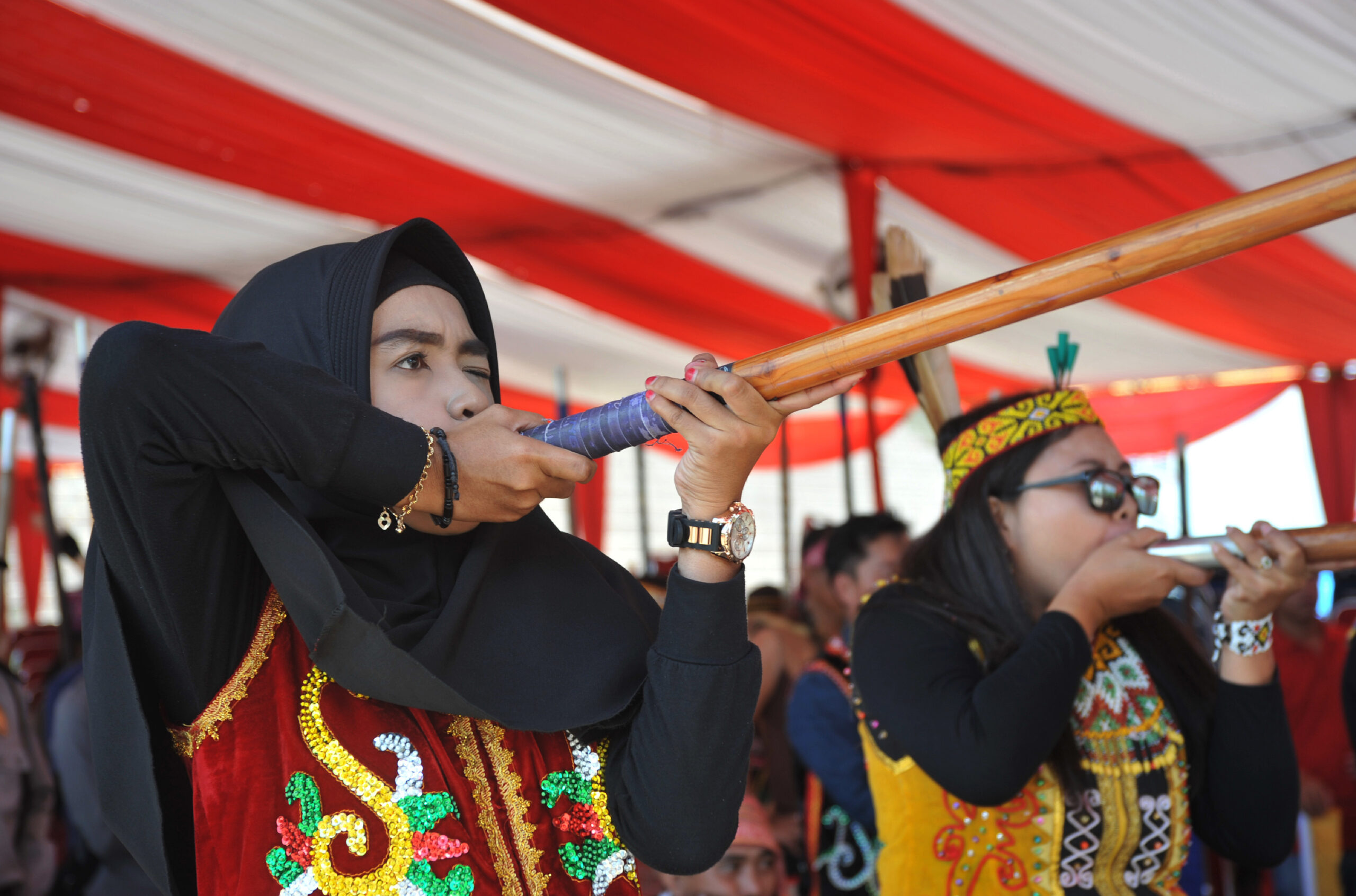
Tuak Traditions and Culture
The “original tuak” is generally made with just four ingredients: glutinous rice, sugar, water and a local wild yeast known as ragi.
“You can guess the taste of a particular tuak from how it looks,” said Kuching-based Assistant Producer, Sofea Tendai Johnathan. “When the tuak is milky, it is still new and sweet at this stage. But after about one year, it’ll be clearer and taste bitter, which is just perfect. It also depends on the hands that made them.”
With a background in anthropology, Johnathan, who is Iban, dedicates her extra time towards educating herself and other youths about their indigenous culture through her social media page Ensera Tendai Productions.
According to her, rice wine is integral to Dayak communities as fermentation was a pragmatic way for indigenous communities to preserve their harvest.
“That’s why you have lots of preserved food in Dayak culture, like kasam ikan (fermented fish) and kasam ensabi (fermented mustard green pickle),” said Johnathan, who also helps to sell her aunt’s tuak from her village in Selangau.
Culinary and gastronomy lecturer Nik Mohd Shahril Nik Mohd Nor, who studied tuak as a form of ethnic food in Malaysia, added that the beverage holds cultural significance for the community as it resembles a form of thanksgiving for the season’s harvest.
“Tuak represents the quality of the year’s yield and hard work,” he said. “It is important during Gawai because everything relies on tuak.”
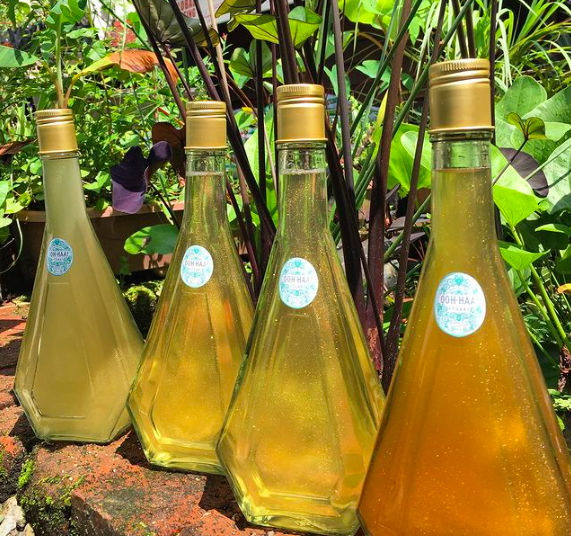
To express collective gratitude, tuak is traditionally offered in ceremonies, known as miring ceremonies in Iban, to honour the Gods (petara), spirits (orang panggau and bunsu antu) and ancestors (petara aki-ini). Tuak is an important drink during this ceremony as it is usually brewed from recently harvested rice, and acts as a way of offering the season’s harvest back to the gods as a form of thanksgiving.
“The first sip is usually for the ancestors or spirits,” Kuala Lumpur-based homebrewer Lydia Lubon explains. “This is done by first pouring into a glass and then pouring on the land underneath your longhouse.” The ensuing sip is then given to the person conducting the miring ceremony, followed by the rest of the guests.
Johnathan is quick to point out that there are also specific prohibitions surrounding the brewing of tuak. These must be observed to prevent bad batches of rice wine or offending any spirits. Tuak should not be brewed on a full moon, and women are not allowed to brew during menstruation.
“I’ve heard once that you’re not allowed to fart while brewing,” said Johnathan, laughing.
Bringing Tuak beyond Sarawak
While tuak holds traditional significance for many Dayaks in Sarawak, recent controversies on Malaysian alcohol brands have drawn public attention to local alcohol products and also spurred conversation about who should make and sell the drink.
The Perikatan Nasional government attempted to impose a “freeze” on conferring all liquor licences in 2020. Further decisions to ban liquor sales in retail and sundry shops across Malaysia in 2021 reignited this discussion.
Sarawak, however, was exempted. According to the Customs and Excise Department of the Royal Customs of Malaysia, native brewers of Sabah and Sarawak who customarily ferment, make or prepare liquor are exempted from obtaining a licence. This is due to the Malaysia Agreement 1963 (MA63) which affirmed political, administrative and economic autonomy of Sabah and Sarawak during the creation of Malaysia.
It risks losing its value as a culturally symbolic drink in exchange for profits”
Sofea Tendai Johnathan, tuak assistant producer
Yet liquor licences in Malaysia generally come with varying conditions, such as operating hours and prohibiting the sale of alcohol to practising Muslims. The debate and possible restrictions regarding the total ban on alcohol production and consumption has led to discussions of potential violation of indigenous cultural rights.
Many tuak brewers and enthusiasts like Johnathan lament that these restrictions can affect tuak’s potential to thrive globally as a form of indigenous craft wine, like the Japanese sake.
“With better distribution and licensing support, it could definitely create a niche within the international markets, and this could make tuak popular again,” said Johnathan, weighing on both the benefits and risks of tuak’s appeal in wider spheres.
“A home-brewed bottle in Sarawak can cost US $5.70 (RM25), but when it reaches other parts of Malaysia, the price can hike up to USD $16 (RM70),” Johnathan added. “That is the risk of commercialising tuak. It may gain an appeal as a unique, ‘exotic’ drink, but it risks losing its value as a culturally symbolic drink in exchange for profits.”
Like images of headhunting and “tribal” tattoos, questions arise on whether this is another case of cultural infringement and exoticisation of indigenous Dayak knowledge and culture for profitable gains, a feature that has long marked indigenous Borneo’s colonial past.
“There’s a very thin line between cultural appropriation and appreciation,” Johnathan said. “If we’re using someone else’s culture as a way to gain profit, then it’s wrong, especially when Dayaks are exoticised and represented as heavy drinkers, or headhunters. But if you know the history of it and can share the cultural significance of it, even if you’re not Dayak, then tuak becomes a starting point to learn more about indigenous cultures in Malaysia.”
As the North Borneo territorial dispute and tensions continue to persist around Bornean autonomy, political representation and religious freedom from the Muslim-majority peninsular, this drink can offer potentials for inclusion and representation of Borneans within the country.
Adding Creative Twists to an Age-old Tradition
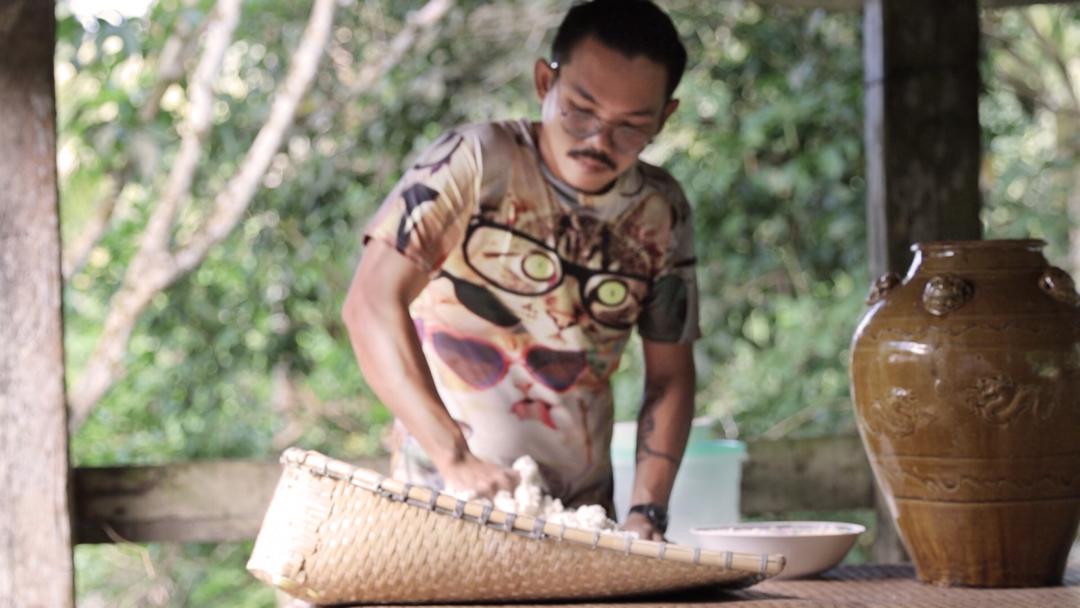
Many young Sarawakian homebrewers have turned to digital platforms and are experimenting with new flavours sourced from locally grown ingredients.
Lubon, who learnt to brew from her cousins and online classes, has been sharing her journey through her social media account, Ooh-haa! Tuak, and concocts unique tuak versions such as edible glitter tuak for Christmas, as well as chocolate tuak.
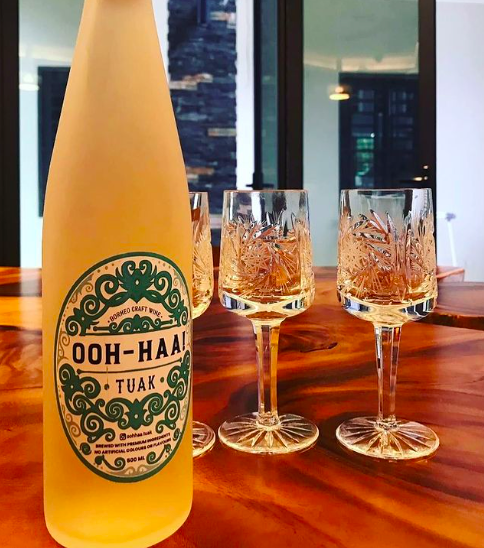
Lubon tries her best to source her ingredients such as strawberries from local farms in the Cameron Highlands. Every few months, she also collaborates with an artisanal chocolatier to conduct chocolate tuak pairing sessions and share stories about fermentation, culture and sustainability.
“I encourage participants to be more aware of what they consume and how the choices they make can impact our carbon footprint,” said Lubon, who also works at an environmental organisation, Free Tree Society. “In our pairing sessions, we talk about the importance of tuak in rituals and the ways local produce can not only reduce environmental waste, it is healthier to consume.”
Homebrewer Maynard Keyne Langet who is of Bidayuh ethnic descent from Tian Mawang village, has made a name for himself amongst the tuak brewing community for his bold flavours with his Kuching-based Bad Cat Borneo label.
While he integrates traditional Bidayuh brewing methods, Langet does not shy away from spinning unconventional twists to tuak. Previously a pastry chef for a decade, he has taken on a more experimental approach towards tuak brewing, with ingredients like coffee and black pepper tuak, omitting rice.
According to Langet, tuak does not necessarily have to be made of rice. “Even traditionally, Bidayuhs in certain areas are known for their tuak made out of sugarcane, and not rice,” he said.
In Sarawak, members of the Bidayuh community brew tuak not only from rice, but also cassava and from local fruits including tuak tampuy, made from a wild variety of mangosteens.
“For my coffee tuak, I use every part of the fresh coffee plant, top to bottom, including the coffee cherries. For me, it’s about seeing how far I can explore and manipulate ingredients.”
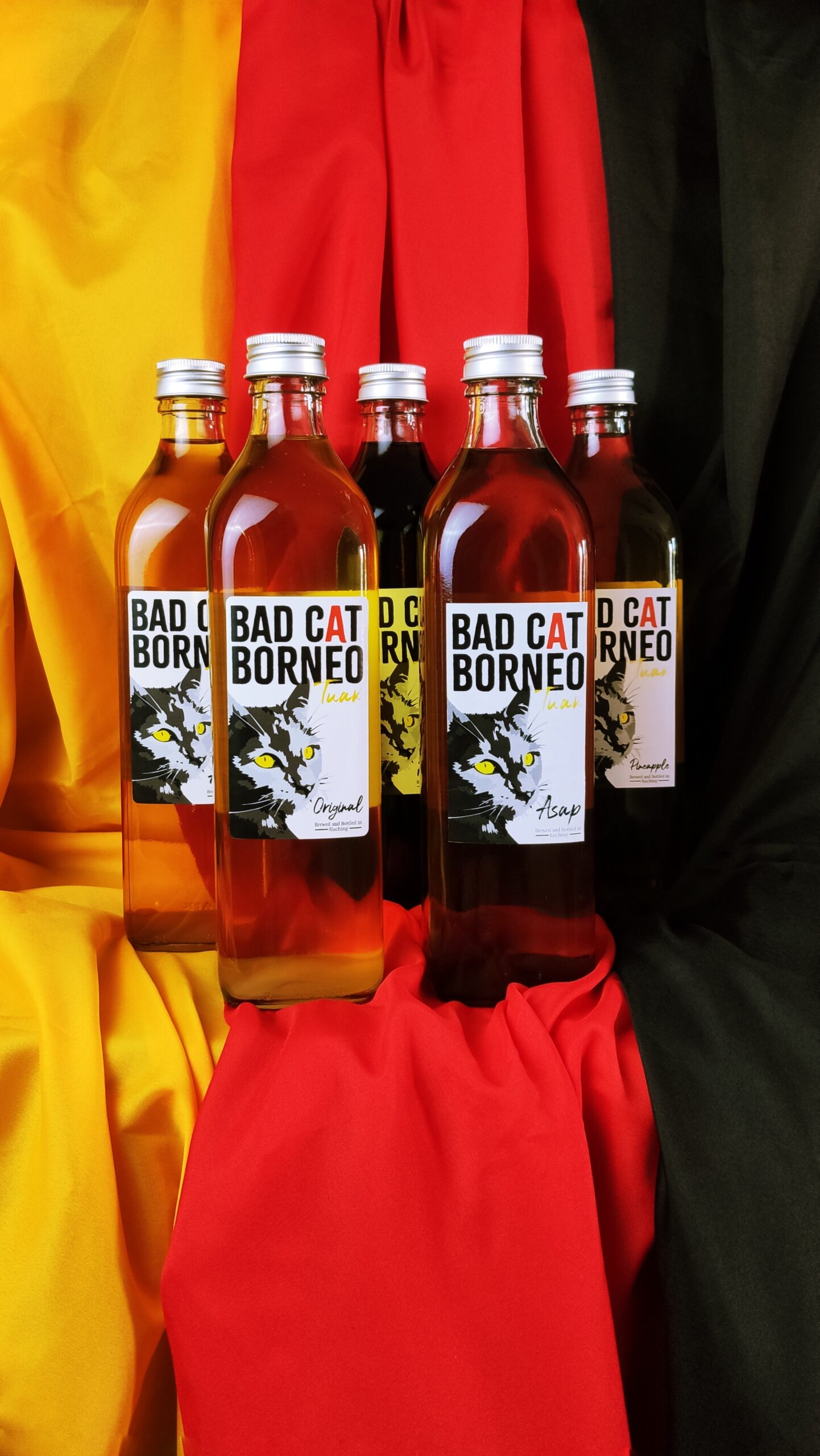
Drawing inspiration from Dayak communities in Kalimantan and other parts of Borneo, Langet has also added unique renditions to his tuak repertoire like tuak asap, which uses roasted rice, and “limited edition” rice tuak that has been aged for one year using his grandmother’s recipe.
“The traditional method involves more local ingredients like purple rice, and you often age it in a tajau,” said Langet referring to large Chinese martaban jars known amongst the Dayak community as tajau or tempayan.
These earthenware, Langet believes, can affect the taste of tuak, as ceramic and clay are “breathable”, regulating the temperature and allowing the liquid to cool down gradually. “So it allows for a more complex taste in the final product.”
Keeping the Spirit Alive
Tuak continues to experience a revival and rejuvenation amongst younger Sarawakians and non-Sarawakians alike. The work of many of these brewers continue to bridge different generations and different cultures in Malaysia.
“We’re bringing the culture of Borneo to the peninsula through a contemporised version of traditional tuak,” said Johnathan. “Tuak is traditionally made with just rice for ceremonial purposes. Now that it’s arrived at the peninsula and younger brewers are making it, there’s more flavour to it.”
For Sarawakian Julian Fred, who is part of a Penang-based group of hobbyist tuak brewers known as O’Haus, tuak represents a gateway to initiate connections.
“When west Malaysians and foreigners approach us to try our tuak cocktails, we get a lot of questions about Sarawak culture and end up sharing things beyond what the beverage is, like how to cheer in Iban!” said Fred.
As brewers forge new culinary grounds with unique ingredients and personal creativity, the age-old tradition of tuak brewing becomes a way of expressing individual interests while also affirming one’s indigenous identity.
“I don’t think tuak should distinguish us from other people—because rice on its own is not unique,” said Langet. “There’s a version of it in Japan, Korea, India, South America. What’s unique is how each land treats it. Each space and time creates a particular sense of taste and smell.”
As the drink undergoes shifts and changes, the rice-based wine of Sarawak becomes a way to relate to different generations, bridging the individual and community and the past and future with the emerging young brewers who carry on their family recipes.
“At the end of the day, it’s not about ethnic differences. It’s about the spirit of the drink itself,” said Langet.


